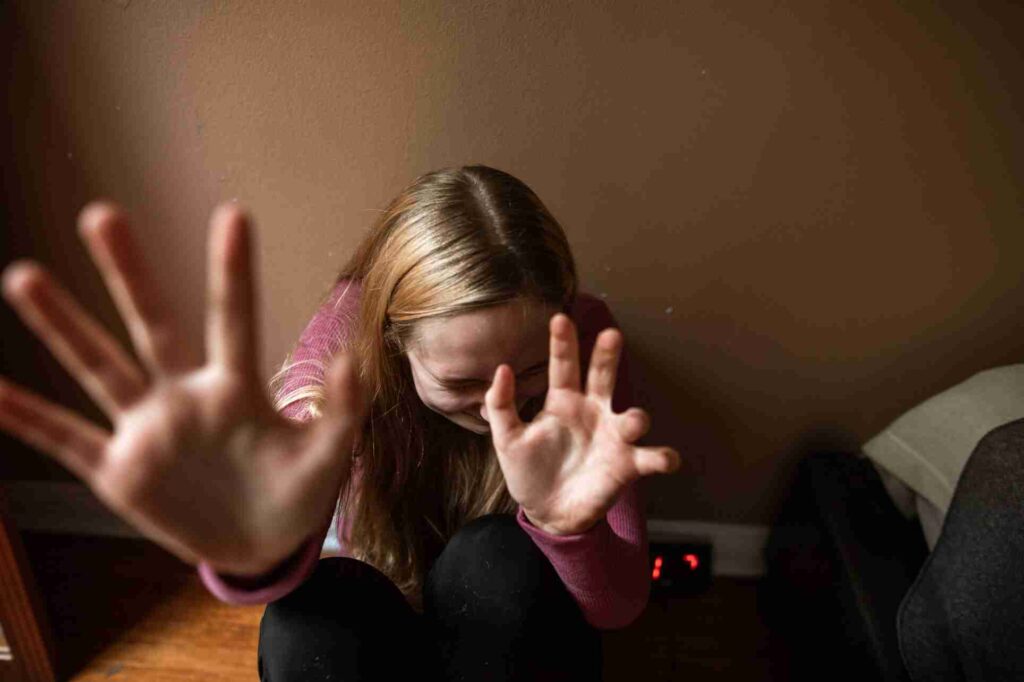Childhood trauma is an issue that reverberates throughout a person’s life, shaping their mental and emotional landscape, and leaving indelible marks that impact their overall well-being. In this exploration, we will journey through the intricate web of childhood trauma, diving into its definition, the diverse types and underlying causes, the enduring effects it imposes, and the path to recovery.
Table of Contents
Defining Childhood Trauma
Childhood trauma, at its core, encompasses distressing experiences that befall an individual during their formative years, typically prior to the age of 18. These experiences may manifest in various forms, including physical, emotional, or sexual abuse, neglect, or the harrowing ordeal of witnessing traumatic events. These experiences can shatter a child’s sense of safety and security, casting long shadows that extend into adulthood.
Childhood trauma is an umbrella term that covers a wide range of adverse events, and these experiences often leave individuals grappling with the aftermath throughout their lives. The impacts of childhood trauma are not limited to the emotional realm, they transcend into a person’s behavior, relationships, and even their physical health.
Types and Causes of Childhood Trauma

Childhood trauma can have long-lasting effects on mental, emotional, and physical well-being.
These effects may manifest in various ways:
Physical Abuse: This form of trauma involves deliberate harm or injury inflicted upon a child. It can manifest as physical violence, such as hitting, slapping, or any actions resulting in bodily harm.
Emotional Abuse: Emotional abuse encompasses consistent patterns of belittlement, criticism, or emotional neglect. It can manifest in the form of humiliation, constant criticism, or manipulation, leaving deep emotional scars.
Sexual Abuse: Sexual abuse involves inappropriate sexual contact or exposure to explicit content. It is a deeply distressing form of childhood trauma that can lead to profound emotional and psychological scars.
Neglect: Neglect is a prevalent form of trauma, and it manifests when a caregiver fails to provide the necessary care and attention a child needs, such as food, shelter, or emotional support. Neglect can be physical or emotional in nature.
Witnessing Violence: This trauma occurs when a child observes domestic violence, substance abuse, or other traumatic events within the family. Witnessing violence creates an environment of fear and instability that can leave lasting emotional scars.
Understanding these different types and causes of childhood trauma is essential for effectively addressing the issue. It enables us to comprehend the varied experiences and backgrounds of individuals who have undergone trauma and to tailor treatment and support accordingly.
Impact of Childhood Trauma
The repercussions of childhood trauma are far-reaching and multifaceted, influencing a person’s mental, emotional, and physical well-being.
Here, we will explore the profound and enduring impact of childhood trauma on individuals:
Mental Health: Childhood trauma often casts a long shadow over mental well-being. Individuals who have experienced trauma are at a higher risk for developing anxiety disorders, depression, and post-traumatic stress disorder (PTSD). These mental health conditions can persist into adulthood and significantly affect a person’s quality of life.
Emotional Well-being: The emotional impact of childhood trauma is profound. It can lead to difficulties in regulating emotions, which can, in turn, affect relationships, self-esteem, and overall emotional stability. Many individuals who have experienced trauma struggle with trust, self-worth, and feelings of shame or guilt.
Physical Health: Research has established a connection between childhood trauma and physical health issues. Individuals who have experienced trauma may be more prone to chronic health conditions, such as heart disease, diabetes, and autoimmune disorders. The stress response triggered by trauma can have long-term detrimental effects on the body.
Behavioral Issues: Childhood trauma can shape a person’s behavior. Some individuals use maladaptive coping mechanisms, such as substance abuse, self-harm, or risky sexual behaviors, to numb emotional pain or regain a sense of control. These behaviors can have serious consequences in adulthood.
Social Functioning: The effects of childhood trauma extend to an individual’s ability to form healthy relationships and maintain a stable work and social life. Trust issues, difficulty with intimacy, and feelings of isolation are common challenges faced by survivors of childhood trauma.
Understanding these long-term impacts is important in providing effective support and intervention for those who have experienced childhood trauma. It highlights the need for comprehensive, holistic care that addresses not only the immediate consequences but also the enduring effects of trauma.
Treatment and Recovery

Recovery from childhood trauma is an intricate and often lengthy process. It requires a multi-faceted approach that acknowledges the uniqueness of each individual’s experience. Here, we explore the various strategies and resources available to help survivors of childhood trauma on their journey to recovery.
Therapy: Professional therapy plays a pivotal role in the recovery process. It offers a confidential and non-judgmental space for survivors to delve into the depths of their trauma. Within this secure environment, individuals can confront painful memories and emotions, gradually making sense of their experiences. Trained therapists assist survivors in understanding the far-reaching impact of trauma on their lives. By shedding light on the connections between past experiences and current struggles, therapy fosters insight and self-awareness.
It’s important to note that therapy is a highly individualized process. The type and duration of therapy may vary based on a person’s unique needs and experiences. For some, therapy may be a relatively short-term intervention, while others may benefit from longer-term support. Regardless of the specific approach, therapy is a vital component of the recovery journey, offering a roadmap toward understanding, healing, and resilience.
Support Groups: Joining support groups or community organizations can provide a profound sense of belonging and understanding. Sharing experiences with others who have faced similar challenges can be remarkably healing. Support groups offer a network of individuals who can relate to the struggles and triumphs of the recovery journey.
Self-Care: Practicing self-care techniques is a crucial component of healing from childhood trauma. This includes activities like mindfulness, exercise, healthy nutrition, and adequate sleep. Self-care empowers individuals to regain a sense of control over their well-being and emotional state.
Medication: In some cases, medication may be prescribed to manage symptoms of anxiety, depression, or other mental health issues that can arise from childhood trauma. Medication can be a valuable part of the recovery process, especially when used in conjunction with therapy and other forms of support.
Education and Awareness: Learning about the impact of childhood trauma and its potential long-term effects is essential not only for survivors but also for their support networks. Education and awareness can foster understanding and empathy, creating a more supportive environment for recovery.
Final Thoughts
In conclusion, the impact of childhood trauma is profound, affecting a person’s mental, emotional, and physical well-being. Recognizing the various forms and causes of childhood trauma is the first step in providing the support and care that survivors need. By understanding the enduring effects of childhood trauma, we can better guide individuals toward effective treatment and recovery. The journey to healing is possible, and no one has to face the lasting effects of childhood trauma alone.
Ready to Make Change?
If any piece of this resonates with you, and you are ready to become more intentional about how your relationship and conflict, reach out to me at naami@centericc.com



